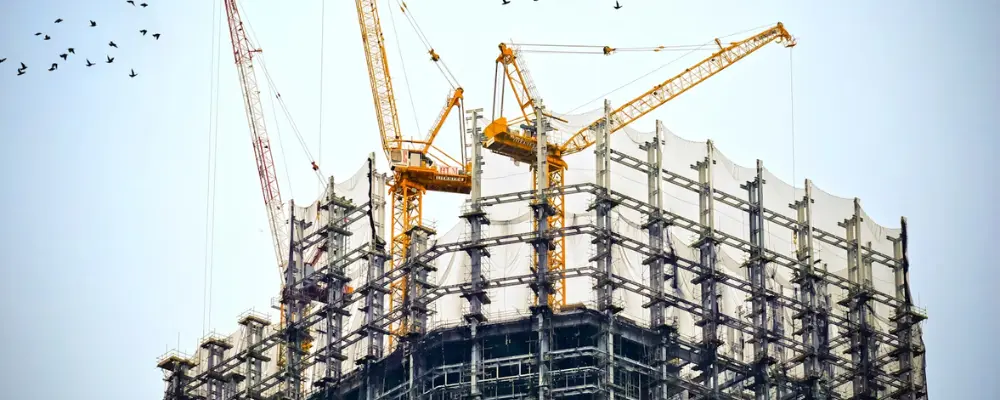In the dynamic world of construction, temporary structures play a key role in ensuring efficiency, safety, and cost-effectiveness during the project lifecycle. These structures, designed to support specific tasks or provide temporary solutions, are essential in achieving construction milestones. This article explores the importance of temporary structures in construction, their benefits, types, applications, and the relevant standards that guide their use.
Importance of Temporary Structures in Construction
Temporary structures serve as essential components in construction projects. They provide the necessary support and infrastructure to facilitate various construction activities, ranging from excavation and concrete casting to equipment storage and worker accommodation. Without these structures, completing tasks efficiently and safely would be challenging.
Key Roles of Temporary Structures
1. Assisting Construction Activities: They provide support during operations like concrete formwork, scaffolding for workers, or bracing during excavation.
2. Ensuring Safety: Temporary structures minimise hazards by providing stable platforms, barriers, or enclosures in high-risk areas.
3. Time and Cost Efficiency: These structures streamline processes by offering specific solutions for particular tasks, reducing project duration and associated costs.
Types of Temporary Structures in Construction
Temporary structures come in various forms, each designed to address specific construction needs. Below are some commonly used types:
1. Scaffolding: It provides access and support for workers during the construction, repair, or maintenance of buildings. They are available in various materials, like steel, plywood and aluminium.
2. Shoring Systems: They are the temporary supports for structures or excavations to prevent collapse. There are different types of shoring systems, like raking shores, flying shores, and dead shores.
3. Formwork: Formworks are temporary molds used to shape concrete during casting. The common materials used are timber, steel, and plastic.
4. Bracing Systems: They provide lateral support to stabilise structures like walls and frames during construction.
5. Cofferdams: Cofferdams are temporary enclosures used to create dry workspaces in water-logged or submerged areas.
6. Construction Hoardings: They are temporary fencing or barriers to secure construction sites and protect the public.
7. Temporary Buildings: Portable structures like site offices, worker accommodations, or storage units.
8. Falsework: Supports that hold up structures until they become self-supporting.
Applications of Temporary Structures
Temporary structures are vital across a wide range of construction activities, including but not limited to:
1. High-Rise Construction: Scaffolding and formwork systems ensure accessibility and structural support during the construction of skyscrapers.
2. Bridge and Highway Projects: Falsework and shoring systems allow the safe construction of bridges and elevated highways.
3. Excavation and Foundation Work: Bracing and shoring systems stabilise soil and prevent collapse during deep excavations.
4. Renovation and Restoration Projects: Scaffolding provides access for repair work on existing structures.
5. Marine and Hydroelectric Construction: Cofferdams and other water-retaining structures are essential for underwater construction or repairs.
6. Site Preparation and Security: Temporary hoardings and fencing secure construction sites, keeping them safe from unauthorised access.
Benefits of Temporary Structures
Temporary structures offer numerous benefits to construction projects, such as:
1. Enhanced worker safety: Temporary scaffolding and protective barriers prevent falls, debris-related injuries, and other accidents, creating a safer work environment.
2. Flexibility and Adaptability: These structures are customisable, making them suitable for a wide range of construction scenarios, from urban high-rises to remote infrastructure projects.
3. Cost-Effective Solutions: Temporary solutions are reusable, reducing material waste and the need for multiple procurement cycles.
4. Ease of Installation and Removal: Designed for quick assembly and disassembly, temporary structures minimise disruptions to ongoing construction or usage activities.
5. Environmental Sustainability: Many temporary structures are made from recyclable materials, aligning with modern sustainable construction practices.
Challenges and Innovations in Temporary Structures
While temporary structures are essential, they are not without challenges. Issues such as improper installation, material weakness and inadequate maintenance can lead to safety hazards or project delays. However, many new innovations are being developed to overcome these challenges
Emerging Innovations
1. Modular Designs: Prefabricated components enhance assembly efficiency and adaptability.
2. Smart Monitoring Systems: Sensors integrated into temporary structures monitor stress levels and environmental conditions in real time.
3. Sustainable Materials: The use of eco-friendly materials like bamboo or recycled composites aligns with green construction initiatives.
Standards Governing Temporary Structures
Ensuring the safe and effective use of temporary structures needs adherence to established standards and regulations. These standards provide guidelines for design, material selection, installation and inspection.
Relevant Standards and Guidelines
1. Occupational Safety and Health Administration (OSHA): Provides safety guidelines for scaffolding, excavation support, and other temporary structures in the U.S.
2. BS 5975:2019 – Code of Practice for Temporary Works Procedures and the Permissible Stress Design of Falsework: A British standard outlining best practices for temporary works, including falsework design and management.
3. EN 12811-1:2003 – Temporary Works Equipment: European standard defining performance requirements for access and working scaffolds.
4. Australian Standard AS 3610 – Formwork for Concrete: Details design and construction requirements for temporary concrete formwork in Australia.
5. IS 14687:1999 – Guidelines for Falsework for Concrete Structures: Indian standard offering recommendations for the design and use of falsework.
6. Temporary Works Forum (TWf) Guidance: Provides insights and technical guidance on managing temporary works effectively.
Monitoring with these standards ensures structural integrity, worker safety, and alignment with legal requirements.
Conclusion
The role of temporary structures in construction cannot be overstated. They form the backbone of efficient, safe, and cost-effective project execution. From scaffolding and shoring to formwork and cofferdams, temporary structures are versatile tools that adapt to the dynamic needs of the construction industry. Following set guidelines promises their practical use while innovations continue to push the boundaries of what these structures can achieve.
As construction projects grow more complex, the importance of temporary structures will only increase. Investing in high-quality temporary solutions and staying updated with the industry’s best practices are key to driving successful outcomes in modern construction projects.

